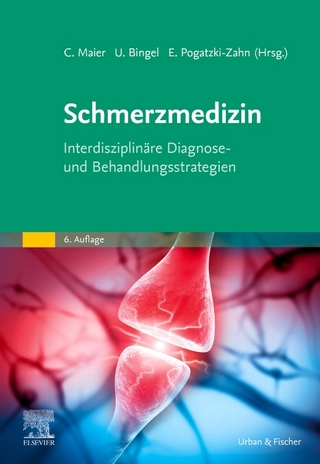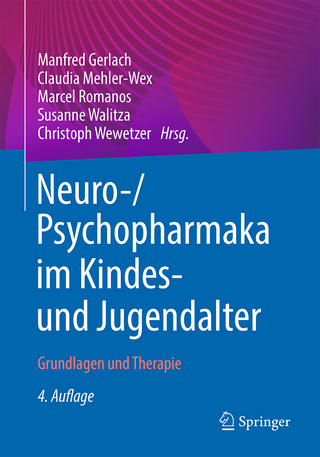
The Neurochemical Basis of Autism
Springer-Verlag New York Inc.
978-1-4899-8197-4 (ISBN)
Withtherecentlyperceivedincreaseinincidenceofautismandtherealizationthat "autism"mayactuallybe"autisms"withsubsetsofaffectedindividuals,researchers have been pursuing the possibility that there may be multiple etiologies for the disorder.Althoughmostautismstudieshavefocusedongeneticsandadvancedn- roimaging,thereisapaucityofresearchaimedatdeterminingtheneurochemical basisofautism.Identifyingcoreneuralsubstratesorkeybiomarkersisessentialto understandingthemechanisticbasisthatmayinpartunderlie"autisms."Alterations inmolecules,proteins,receptors,andsynapticelementsaresomeofthecontrib- ingsubstratesthatcouldresultinaltereddevelopmentalprocesses,changedsynaptic function,andaberrationsinconnectivity.Itisnowapparentthatmultiplebrainareas are affected in autism, and neuropathological defects have been described within corticalandsubcorticalnetworks.Althoughrecentprogresshasbeenmadeinid- tifyingsomeofthegenesthatmayunderliethedisorder,muchattentionhasalso beengiventoepigeneticand/orenvironmentalfactorsthatmaycontributetosubsets ofautisticindividuals. The contributors to this book were hand selected because of their expertise in their respective ?elds.
Individually each chapter presents a unique perspective into the clinical, developmental, neurochemical, and/or physical chemical basis of autism. The contributing authors summarize current research ?ndings in their respective areas and also present novel ideas and propose hypotheses and p- sible mechanisms that may be operative during development and the potential consequencesofhavingdefectsinspeci?cmolecules,receptors,orgenes. Thesubtitle"FromMoleculestoMinicolumns"wasinsertedbecauseofmuch recent attention given to alterations in the basic organization of mini- or mic- columns of neurons in cerebral cortical areas in autism. These especially include prefrontalcorticalareasthatundergoanovergrowthduringearlypostnataldevel- mentinmanyindividualswithautism.Tothisend,theworldrenownedDr.Alan Peters,theneuroanatomistthatoriginallydescribedmini-ormicro-columnaror- nizationinthecerebralcortex,wasrecruitedtowriteachapterinthisbookgiving hisexpertperspectiveontheissueinautism. The book begins with highly respected clinician, Dr. Margaret L. Bauman, DirectoroftheLADDERSclinicintheBostonarea,withaclinicalandmedicalp- spectiveofautismdiscussingetiologies,clinicalpresentation,earlyidenti?cation, vii viii Preface advancementsinmedicalcare,andassociateddisorders.
Inthechapter"TheMale Prevalence in Autism Spectrum Disorders: Hypotheses on its Neurobiological Basis",ItalianresearchersDrs.FlavioKellerandLilianaRutapresentneuroch- ical hypotheses as the basis for the predominance of male prevalence in autism discussing the possible roles of estrogen, testosterone, oxytocin, and vasopressin in the organization of brain circuits and hemispheric specialization. Psychiatrist Dr. Ricardo Vella relates neuropathologies in autism, in the limbic and cereb- lar regions, to speci?c behaviors and presents a developmental perspective and hypotheses regarding emotional and attachment behaviors in autistic individuals.
Autism Spectrum Disorders: Clinical and Medical Perspectives.- The Male Prevalence in Autism Spectrum Disorders: Hypotheses on its Neurobiological Basis.- Neuroanatomical-Behavioral Correlates in Autism: A Working Hypothesis.- The Morphology of Minicolumns.- The Developmental Neuropathology of Autism.- Understanding Alterations During Human Brain Development with Molecular Imaging: Role in Determining Serotonin and GABA Mechanisms in Autism.- Glutamic Acid Decarboxylase (GAD) as a Biomarker of GABAergic Activity in Autism: Impact on Cerebellar Circuitry and Function.- Epigenetic Dysregulation of 15q11-13 GABAA Receptor Genes in Autism.- Cholinergic Component of Autism Spectrum Disorder.- Oxytocin and Autism.- The Role of the Noradrenergic System in Autism Spectrum Disorders.- Oxidative Stress in Autism and Its Implications for Dopamine-Stimulated Phospholipid Methylation.- Neuroligins and Neurexins: Synaptic Bridges Implicated in Autism.- The Neurophysical Chemistry of Autism: Postulates from Intelligence Modeling.- Pharmacological Treatment of Autism.
From the reviews:
“In this much needed book aimed at researchers, scientists and clinicians, Blatt (anatomy and neurobiology, Boston U) assembles 15 chapters that focus on the neurochemical basis of autism a little studied topic. … Lay abstracts and summaries at the end are aimed at parents, siblings and caregivers.” (SciTech Book News, June, 2010)
| Erscheint lt. Verlag | 13.12.2014 |
|---|---|
| Zusatzinfo | XV, 295 p. |
| Verlagsort | New York |
| Sprache | englisch |
| Maße | 155 x 235 mm |
| Gewicht | 480 g |
| Themenwelt | Medizin / Pharmazie ► Allgemeines / Lexika |
| Medizin / Pharmazie ► Medizinische Fachgebiete ► Neurologie | |
| Medizin / Pharmazie ► Medizinische Fachgebiete ► Pharmakologie / Pharmakotherapie | |
| Medizin / Pharmazie ► Medizinische Fachgebiete ► Psychiatrie / Psychotherapie | |
| Medizin / Pharmazie ► Studium | |
| Naturwissenschaften ► Biologie ► Humanbiologie | |
| Naturwissenschaften ► Biologie ► Zoologie | |
| ISBN-10 | 1-4899-8197-7 / 1489981977 |
| ISBN-13 | 978-1-4899-8197-4 / 9781489981974 |
| Zustand | Neuware |
| Haben Sie eine Frage zum Produkt? |
aus dem Bereich


